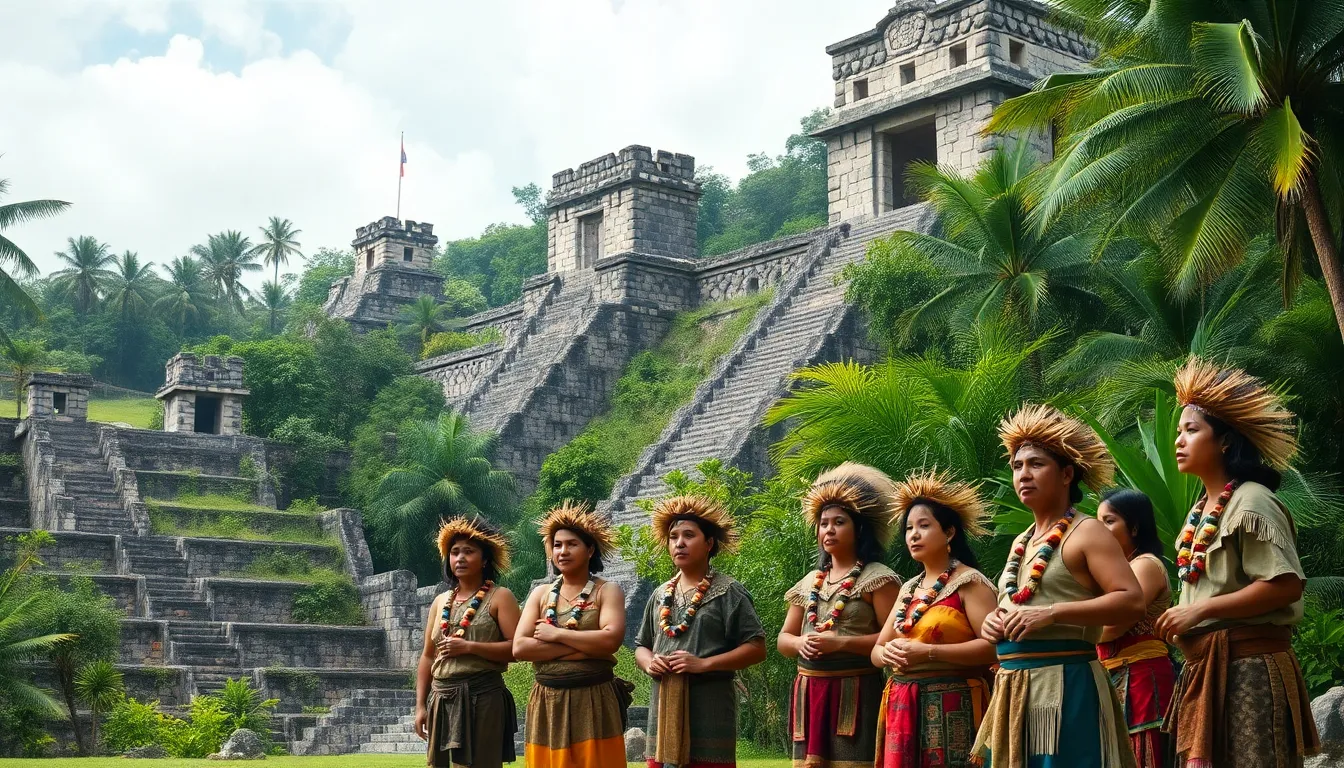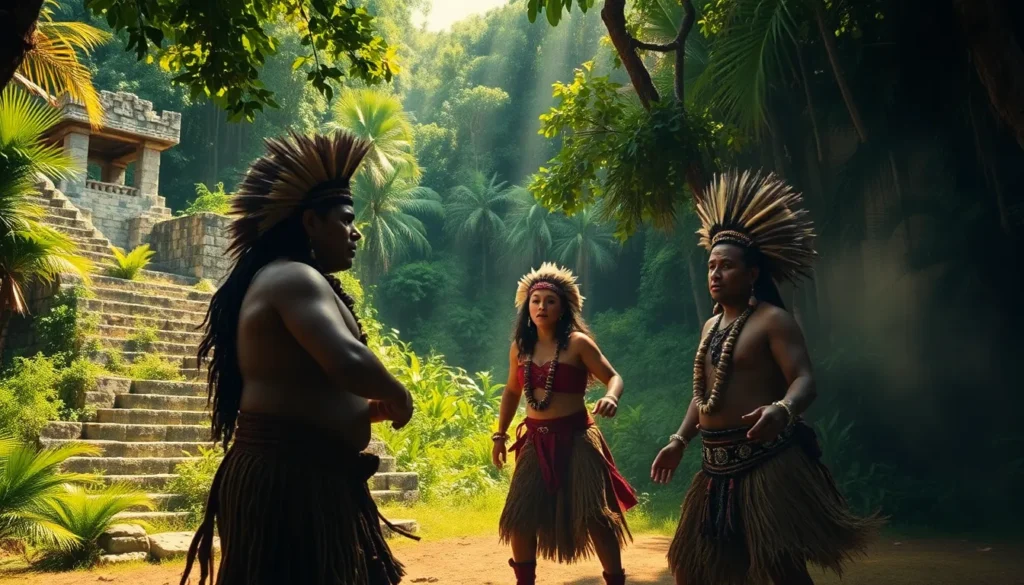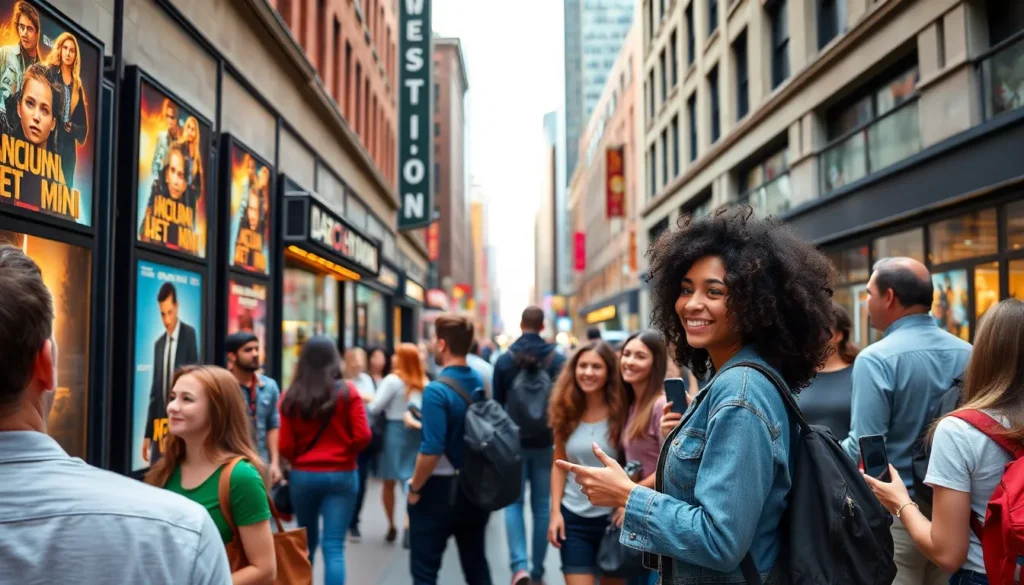Imagine stepping into a world where ancient civilizations meet the silver screen. Welcome to Cinema Maya, where the rich tapestry of Mayan culture unfolds in vibrant colors and captivating stories. This isn’t just a film genre; it’s a journey through time that promises to thrill and educate, all while keeping you on the edge of your seat.
Cinema Maya
Cinema Maya represents a unique film genre deeply rooted in the cultural heritage and history of the ancient Mayan civilization. This genre captivates audiences by seamlessly merging entertainment with education. Thrilling narratives often depict the struggles and achievements of the Mayan people, offering insight into their extraordinary civilization.
Themes in Cinema Maya frequently focus on spirituality, mythology, and the connection between humanity and nature. Films portray the intricate relationship between the Mayans and their environment, showcasing agricultural practices, rituals, and the importance of celestial events.
Notable films exemplifying this genre include “Apocalypto,” directed by Mel Gibson, which explores the impact of European colonization on the Mayan civilization. Another significant title is “Ixcanul,” directed by Jayro Bustamante, which highlights contemporary issues faced by indigenous communities through a Mayan lens. Through these stories, filmmakers address themes of identity, resilience, and cultural preservation.
Filmmakers often utilize indigenous languages, employing them to enhance authenticity in their narratives. This choice not only enriches the viewing experience but also emphasizes the importance of preserving these languages amid globalization. Soundtracks frequently feature traditional music, which reinforces cultural identity and enhances the overall atmosphere.
Audience reception of Cinema Maya underscores its educational value. Viewers engage with the rich tapestry of Mayan history, gaining a deeper appreciation for the complexity of the civilization. By blending thrilling stories with factual elements, this genre fosters a greater understanding of the Mayans and their enduring legacy.
Historical Background

Cinema Maya originates from a desire to portray the rich traditions and historical narratives of the ancient Mayan civilizations. This film genre has evolved significantly over the years, becoming a medium for understanding Mayan culture and contemporary issues.
Origins of Cinema Maya
Origins date back to the late 20th century, amid a growing interest in preserving indigenous stories. Filmmakers aimed to highlight the complexities of Mayan life and heritage. Early examples combined documentary styles with dramatized narratives, providing an engaging glimpse into the past. The debut of films like “Apocalypto” propelled this genre into mainstream consciousness. By incorporating local traditions, filmmakers contributed to a broader understanding of Mayan civilization for international audiences.
Key Figures in Cinema Maya
Key figures have shaped Cinema Maya into the impactful genre it is today. Directors such as Mel Gibson, through “Apocalypto,” introduced mainstream audiences to Mayan narratives. Other directors, like Jayro Bustamante, craft films addressing modern-day struggles faced by indigenous communities. Actors from the region often portray authentic characters, enhancing the cultural depth of narratives. Production teams work closely with local historians and cultural experts, ensuring representation aligns with historical accuracy. Together, these individuals enrich Cinema Maya, making it a vital conduit for exploring Mayan identity and heritage.
Characteristics of Cinema Maya
Cinema Maya encapsulates the history and culture of the Mayan civilization through its unique storytelling approach.
Themes and Motifs
Themes in Cinema Maya frequently explore spirituality, mythology, and humanity’s connection to nature. These films depict the struggles and triumphs of the Mayan people, often highlighting traditional beliefs and practices. Motifs such as the duality of life and death, the importance of community, and the impact of colonization resonate throughout the narratives. Folkloric elements enrich the stories, allowing audiences to connect with ancient traditions. Cultural identity plays a significant role, as characters navigate their heritage amid modern challenges. Films like “Apocalypto” and “Ixcanul” serve as prime examples, merging historical context with contemporary issues to create powerful messages.
Visual and Aesthetic Styles
Visual styles in Cinema Maya emphasize authenticity through stunning cinematography and rich landscapes. Filmmakers often showcase vibrant colors reflective of Mayan art, and intricate costume designs draw from traditional garments worn by the community. Cinematic techniques include dynamic camera movements and natural lighting that highlight the beauty of the Mayan environment. Traditional music interwoven throughout the films enhances the immersive experience. Artful set designs recreate ancient architecture, grounding the viewer in historical settings. Visual storytelling not only captures the essence of Mayan culture but also reinforces the emotional depth of the narratives.
Impact on Contemporary Film
Cinema Maya significantly influences contemporary film by reshaping narratives and promoting diverse representations. Filmmakers incorporate elements of Mayan culture and storytelling techniques, enriching the cinematic landscape.
Influence on Modern Cinema
Cinema Maya introduces audiences to unique motifs and historical contexts, inspiring directors across genres. Films like “Apocalypto” and “Ixcanul” highlight indigenous struggles and successes, broadening the cinematic narrative. Directors often experiment with visual styles, incorporating traditional art forms that resonate with modern viewers. As a result, these elements challenge filmmakers to create stories that reflect diverse cultures and experiences, promoting inclusivity in storytelling. Innovative use of language and authentic representation encourages dialogue about indigenous issues, influencing filmmaking methodologies globally.
Recognition and Awards
Cinema Maya garners recognition at various film festivals, showcasing its cultural impact. “Ixcanul” received accolades, including the Best Foreign Language Film at the 2016 Academy Awards. Such achievements highlight the genre’s significance in global cinema. Increasingly, international audiences celebrate the artistic merits of these films, leading to greater visibility for indigenous narratives. Awards and recognitions not only validate the cinematic quality but also amplify discussions around cultural preservation. Critics laud the emotional depth and authenticity presented in the genre, further establishing Cinema Maya as a powerful force in contemporary film.
Conclusion
Cinema Maya stands out as a transformative genre that not only entertains but also educates. Its unique storytelling approach and rich visual aesthetics immerse audiences in the complexities of Mayan culture and history. By addressing contemporary issues and historical narratives, it fosters a deeper understanding of indigenous identities and experiences.
As filmmakers continue to explore this genre, the impact of Cinema Maya will likely expand, inspiring future generations to appreciate and engage with the profound legacy of the Mayan civilization. This genre’s growing recognition in the film industry highlights its importance in promoting diverse narratives and enriching global cinema.



